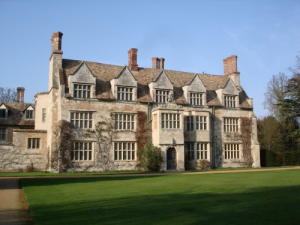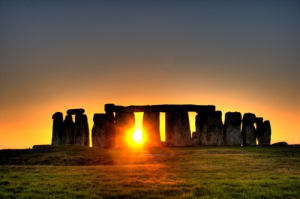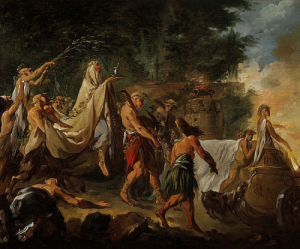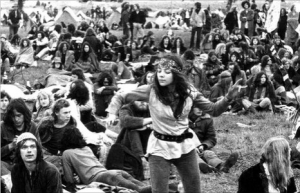The Heritage Trust
Geomancy is the magic of the earth. The magic of the hills and the forests, the mountains and the valleys. A Geomancer draws from the natural energy of the land, harnessing the strength of nature to build and destroy. Stability and growth are the cardinal values in the Heritage Trust, the home of Geomancy, and as such they have proven to be among the most resilient of the magic schools, if not the largest. Geomancers tend to be divided culturally by their preferred environments. Geomancers who draw their power from the rock and stone tend to prefer a lonely existence in the mountains and hills, those who draw from the fields and forests prefer to live in the country with others. Of course, any Geomancer can potentially be found anywhere, provided there is a strong connection to the natural forces - there are few Geomancers in cities.
Information on the magic of Geomancy itself can be found here.
The Heritage Trust of Geomancers
The Heritage Trust is often seen by others in the magical community as a band of lovable and harmless eccentrics. The stereotypical Geomancer is a strange combination of three archetypes: the deranged and isolated Hermit, the spaced-out and washed up Hippie, and the boring and bookish English Professor. As with all stereotypes, however, this is not a particularly accurate deconstruction.
Those born as Geomancers do consistently display a propensity for natural environments - a love for the woods and the hills, the forests and mountains. This inclination is not limited to the archetypes above however, and thus the real membership of the Trust tends to be as varied and ecletic as that of any other organisation. Although traditionally associated most strongly with the field of Alteration, the Trust has its share of grizzled Evocation masters, sneaky Illusionists and wise Enchanters.
The Trust operates in public as a national heritage organisation - in reality however its primary purpose is to educate and unite disparate Geomancers in Britain. It is largely decentralised, and so many Geomancers (particularly the reclusive types: the odd hermit does exist) prefer not to get involved in Trust activities. However, the Trust has a burgeoning membership of young activists and educators, eager to raise the profile of Geomancy away from the old stereotypes. Young Geomancers learn from travelling tutors, who go from area to area teaching students from their homes - a convenience for those who grow up in the country, far from any Heritage Trust location.
Attitude to Outsiders
The Trust is fairly accepting of Outsiders, and many Wytches of other elements count themselves as members of the Trust. The organisation does not allow absolutely anyone in however, and so any potential Trust member must prove their enthusiasm for the work that the Trust does, as well as their loyalty and their love for nature.
Structure
The Heritage Trust has two official leaders: the President and the Archdruid.
The President makes decisions to be voted on by the organisation, with the help of a board of the five most experienced/valued members of the Trust. Decisions aren't made very often, as the organisation is stable and active - as such when decisions need to be made urgently, the Trust can be rather slow to react. The current President is Dr. Robert Smith, a professor of Anthropology and experienced Geomancer.
The Archdruid is the spiritual leader of the Trust. Seen by most as an amusing curiosity, the formal powers of the Archdruid are rather limited - they are respected and their opinions are considered, but that is where it ends. There are members of the Trust who still follow the old ways and take heed when the Archdruid speaks, but they are by far the minority. The current Archdruid is William Hamling, an enthusiastic yet eccentric and slightly spaced out old man.
The last major position in the Trust is that of the Enforcer. The Enforcer is these days largely an honourary position, as it has been a long time since the Heritage Trust engaged in large scale conflict - but in theory, the Enforcer manages and trains the fighters of the society, preparing them for potential combat. The current Enforcer is Captain Deborah Slate, a veteran of the Falklands who discovered her magical abilities at the unusually advanced age of 37. When she discovered her abilities however, she relished them and quickly became the most skilled combatant the Trust can offer.
The HQ of the Trust is currently the Walpole stately home in Devon.
History
Despite its modern reputation within the magical community for calm and stability, the history of the Heritage Trust is a surprisingly violent one. The Heritage Trust is but one of many names for the secret order of Geomancers active throughout history. The varied membership of the Trust - including hippies, druids, hermits, country squires, and even relatively ordinary people - reflects the changing nature of Geomancer society.
Origins
The roots of the Trust lie in prehistory, and the religious beliefs of the early inhabitants of the British isles. Those attuned to earth magic would exhibit power over their environment, and become the earliest Geomancers - these primitive druidic mages were revered as religious leaders, as their power was clearly a gift from the gods and the spirits of the land. Modern magical historians believe that many of the more impressive prehistoric monuments, such as Stonehenge and the Uffington White Horse, were in reality impressive displays of Geomancy, intended to give reverence to the spirits to which the Druids attributed their powers.
Geomancy and the Druids remained the dominant magical presence throughout the British isles until the arrival of the Roman Empire. The Druid mages fought furiously against the foreign invaders (some say that Boudica herself was a powerful Geomancer) - however the Romans had both numbers and the destructive magic of their own mages, the Pyromancers, and thus eventually won out. Under Roman rule Geomancy suffered a decline. Those with magical potential generally opted to let their powers lapse - why voluntarily play for the losing side? Aside from a brief resurgence of interest amongst the Roman nobility as an ethnic curiosity, Druidic Geomancy became a small, underground movement in England. Scotland and Wales remained havens for earth mages, and are the most fiercely independent enclaves of the Trust even today, disliking the modern centralised English organisation. The fall of the Roman Empire allowed Geomancy to start to make a resurgence, but it did not truly become a united force across Britain in the way it had been.
The Trust and the Order
Geomancers did not suffer greatly during the Witch Hunts, retreating underground (both literally and metaphorically), and thus emerged unusually strong and united following the 1735 Accord. In 1781 Irishman Norman O'Hurle founded the Druidic Trust in an attempt to bring disparate Geomancers into a united society, a move highly popular amongst the Welsh and Scottish wings, but less so in England due to the religious and celtic tone. In 1794 Robert Rawnsley founded the Heritage Order, ostensibly to protect buildings and spaces of cultural significance, but in reality to create an organisation for English Geomancers and to provide spaces of learning. In the 1830s a dispute with the Druidic Trust over territory led to a violent conflict between militant members of the Druids and the Heritage Order. This ended in a crackdown by the Hammer, who formally dissolved the generally more militant Druidic Trust, the remnants of which merged with the Heritage Order to create the Heritage Trust of Geomancers.
Post-Schism
The modern Heritage Trust has been suprisingly stable over its nearly 200-year existence, save for brief skirmishes with the Hammer or with militant Druidic revivalists. The most serious of these incidents, which involved both, was the Drummond incident of the 1930s. Powerful Geomancer Ramsey Drummond was a Scottish extremist Druid secessionist who staged a coup in an attempt to reconnect Geomancers with their roots. The resulting conflict became quite noticable, particularly when a 6.1 magnitude earthquake shook Dogger Bank, a secret Secessionist enclave. This brought down the attention of the Hammer once more, who swiftly and effectively resolved the conflict by imprisoning the most conspicuous combatants of both sides.
The Heritage Trust received a massive influx of members following the birth of the Hippie movement. Magical powers and spirituality, both real and imagined, became a matter of public interest, and hundreds of new Geomancers emerged from the New Age wave. Glastonbury became a focal point for Geomancy in the UK, due both to the festival and to the town itself (some flower children claim that the Tor in particular is resonant with “natural energies”, and claim their magic is much more powerful when within sight of it). In the following decades the Hippie movement faded, but the legacy of it remained strong in the Heritage Trust (long time deranged Hippie Moon Wolfbride is still a high ranking Geomancer in the Trust) informing a new generation of Geomancers with a more relaxed, less militant attitude. Most of the leadership figures currently in the Trust, although appearing straight-edged and stuffy, have seen excess and enthusiasm that would suprise the younger Geomancer - as such they are generally fairly relaxed and accepting individuals.



